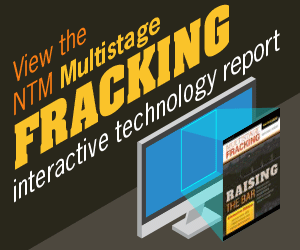Quebec Research Will Improve Techniques For Monitoring Injection Of CO2 Underground
- Published: Wednesday, 12 December 2012
- Author: Maurice Smith
The current mainstream monitoring techniques measure seismic waves that travel underground because these waves are affected by the injection of CO2 and these changes are used to track where the CO2 is going, says the project’s lead investigator, Bernard Giroux, of Institut national de la recherché scientifique (INRS).
Carbon Management Canada (CMC), a federal Network of Centres of Excellence that supports game-changing research to reduce CO2 emissions in the fossil energy industry as well as from other large stationary emitters, is providing Giroux and his team $450,000 over three years. In its 2012 round of funding, CMC is awarding $3.75 million to Canadian researchers working on eight different projects. The awards were made after a rigorous, international, peer-reviewed process.
“The rock contains water or oil or gas and we are replacing that with CO2, which has different physical properties. The injection process also changes the pressure and that can have a strong influence on the overall properties of the rock. Thus, seismic properties are both affected by changes in fluid and pressure,” says Giroux.
“So, when we’re injecting CO2 we’re changing both fluid and pressure, and there’s an ambiguity here. We’re monitoring something, but we’re not exactly sure in which proportion we should attribute measurements to changes in pressure or changes in fluid.”
Giroux is leading an international team of researchers from the
There are three components to the research that will improve monitoring of injecting CO2.
In the lab, the researchers will fill in gaps of knowledge about the electrical properties of CO2 as well as cross relationships between seismic and electric properties. “We want to understand the relationship between fluid nature, pressure changes and temperature changes to improve our fundamental understanding of how CO2 affects the electrical properties of the rocks,” says Giroux.
Using a saline aquifer in
The project will also develop numerical models that will help assess all the data gathered.
“We want, as much as physically possible, to give guarantees that we know where every drop of CO2 is going,” says Giroux, ”and we want to increase the safety and public acceptance of these sequestering operations.”
Carbon Management Canada is a national network that funds research and promotes the transfer to practice of knowledge and technologies to reduce CO2 emissions in the fossil energy industry and other large stationary emitters. CMC has over 160 investigators, network agreements with 27 Canadian universities, and has invested $22 million in 44 research projects.
Institut national de recherche scientifique is a graduate and postgraduate research and training university. First in Canada in terms of research intensity (grants per professor), INRS brings together some 150 professors and close to 700 students and postdoctoral fellows in its centres in Montreal, Quebec City, Laval, and Varennes. INRS research teams conduct fundamental research essential to the advancement of science in





